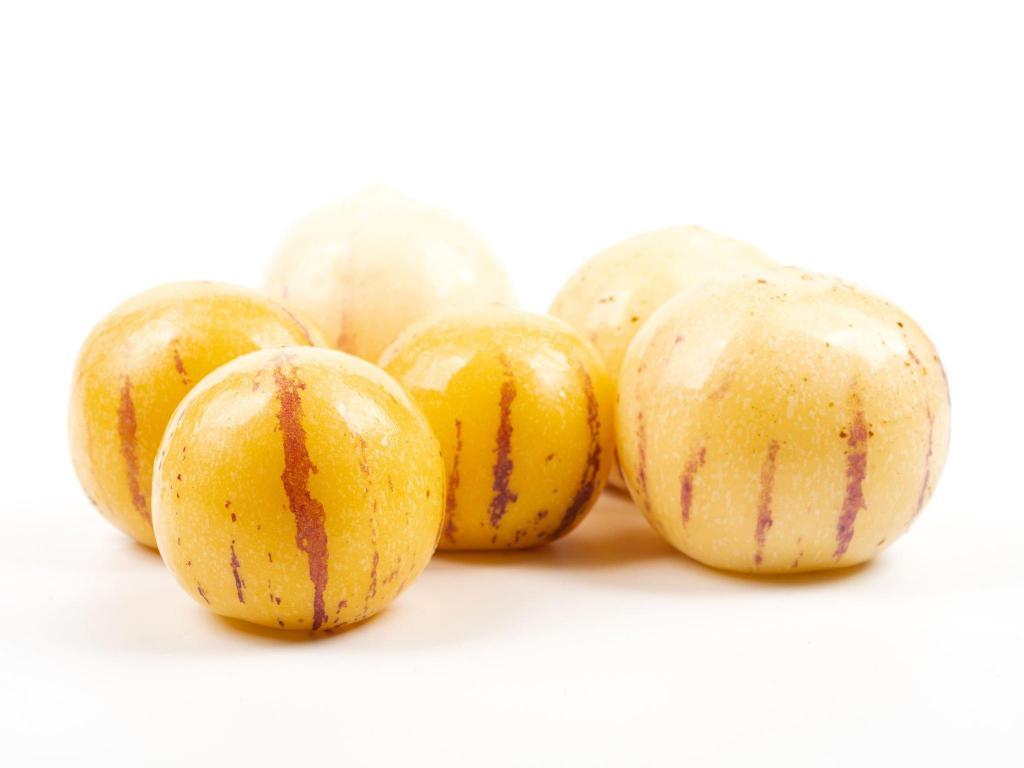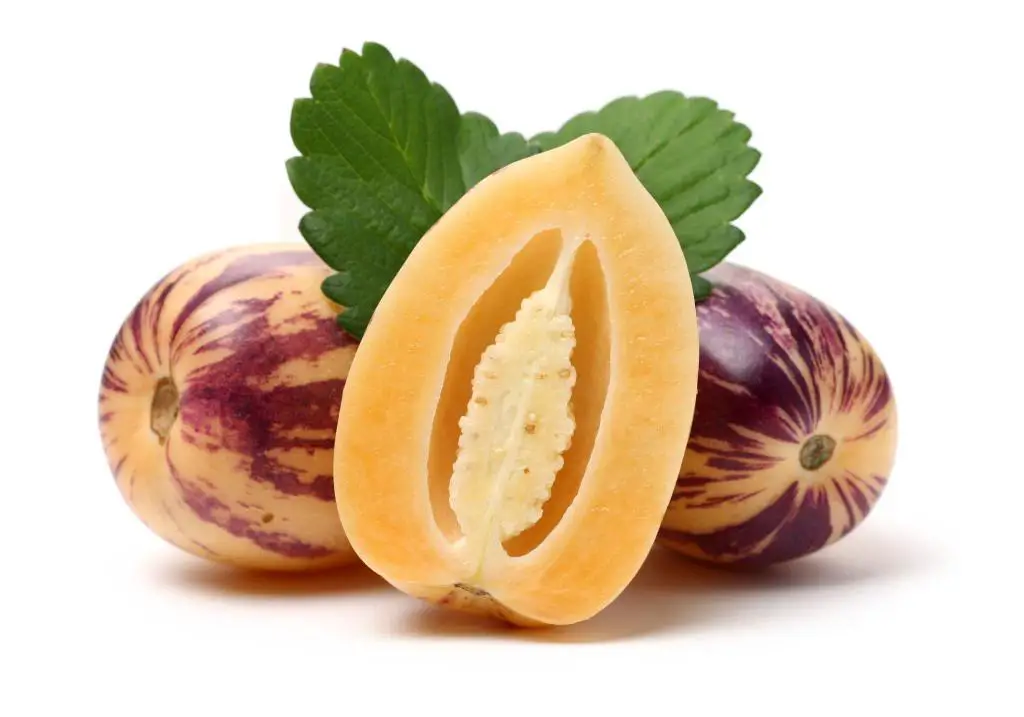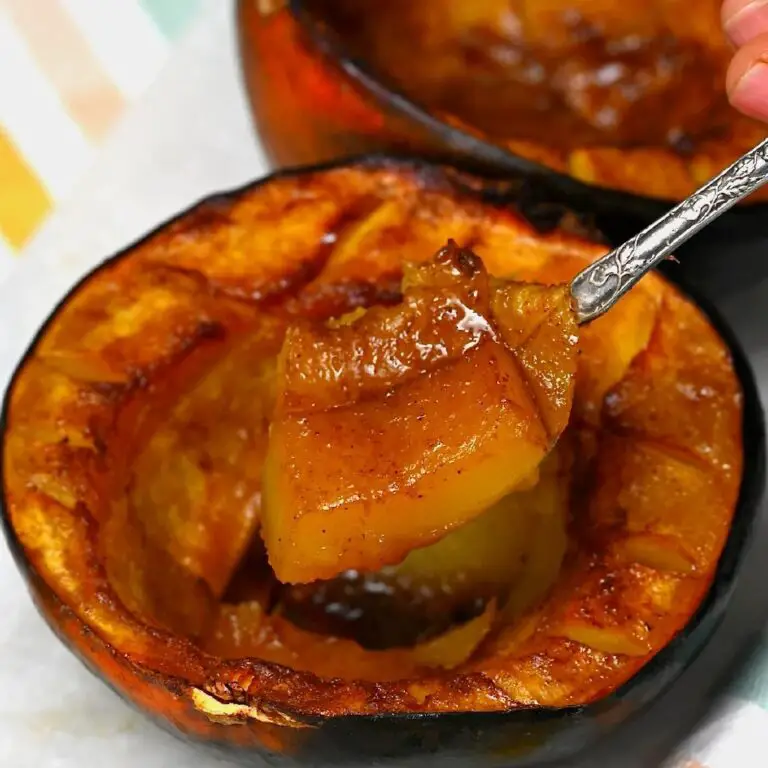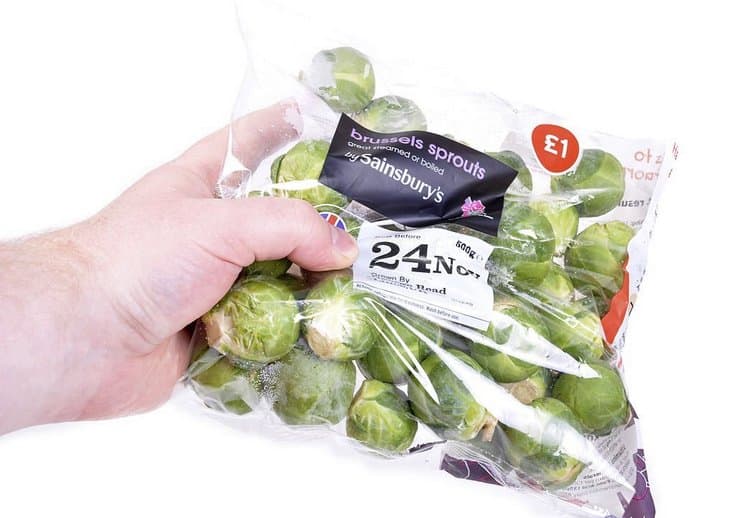Can You Eat Pepino Melon Skin? Are Pepino Melons Good for You?

Have you ever wondered if you can eat the skin of a Pepino melon? Well, wonder no more! This juicy and refreshing fruit is becoming increasingly popular, and many people are curious about its potential health benefits. The good news is that Pepino melon skin is not only edible but also packed with nutrients that can be beneficial for your health.
In this article, we’ll explore whether or not you can eat Pepino melon skin, and what kind of health benefits this fruit has to offer. We’ll also take a closer look at how to prepare and eat a Pepino melon, so you can get the most out of this delicious and nutritious fruit.
So, whether you’re a seasoned Pepino melon eater or a curious newbie, keep reading to learn more about this versatile and tasty fruit.
Why Do People Like to Eat Pepino Melon?
Pepino melon, which is also called tree melon or sweet cucumber, is a tasty and unique fruit that has been popular for hundreds of years. The fruit looks like a yellow pear-shaped melon and has a unique taste that is a blend of honeydew melon and cucumber.
This fruit is native to South America and is widely grown in countries such as Peru, Ecuador, and Chile.
One reason why people love to eat pepino melon is because of its unique taste. Unlike other fruits, pepino melon has a flavor that is hard to describe and is often compared to other fruits like honeydew melon and cantaloupe. Here are some more reasons why people like to eat this tropical fruit:
- Sweet taste: Pepino melon has a sweet and refreshing taste that makes it a perfect snack or dessert. Its flavor is often described as a combination of honeydew melon and cucumber, with a hint of pear.
- Nutritious: Pepino melon is a good source of vitamins and minerals, including vitamin C, potassium, and fiber. It is also low in calories and fat, making it a healthy addition to any diet.
- Versatile: Pepino melon can be eaten raw or used in a variety of recipes, including salads, smoothies, and desserts. Its mild flavor makes it a great complement to many other ingredients.
- Easy to prepare: Unlike some other fruits, pepino melon is easy to prepare. Simply wash the fruit, cut it in half, and scoop out the seeds. The flesh can then be sliced or diced for eating or using in recipes.
- Cultural significance: Pepino melon is a popular fruit in many Latin American countries, where it is often served with lime and chili powder for a spicy-sweet flavor. It is also used in traditional medicine to treat a variety of ailments.
Are Pepino Melons Good for You? Health Benefits of Eating Pepino Melon
This juicy fruit is not very well known, but its health benefits are so great that it deserves more attention. It is a fruit that is native to South America and has been cultivated in other parts of the world.
One of the most significant health benefits of eating Pepino Melon is its high water content. This fruit is made up of 90% water, making it an excellent choice for hydration.
Additionally, it is low in calories, with only about 30 calories per 100-gram serving, making it a great snack for those who are trying to lose weight or maintain a healthy diet. The high water content of Pepino Melon also makes it great for digestion and preventing constipation. The fruit is also packed with vitamins and minerals like Vitamin C, Vitamin A, and potassium, which are essential for good health.
Another health benefit of Pepino Melon is its anti-inflammatory properties. The fruit contains an enzyme called papain, which is known to reduce inflammation in the body. This makes it great for people who suffer from conditions like arthritis, where inflammation can cause pain and discomfort.
Additionally, the high levels of Vitamin C in the fruit help to boost the immune system, reducing the risk of infections and diseases.
Finally, Pepino Melon is also rich in antioxidants, which help to prevent cell damage and reduce the risk of chronic diseases like cancer. Antioxidants like carotenoids and flavonoids are found in high levels in Pepino Melon, making it an excellent fruit to add to your diet if you are looking to improve your overall health and well-being.
Can You Eat Pepino Melon Skin?
Pepino melon has a smooth, thin skin that is covered in a delicate pattern of green and purple stripes. The question of whether or not you can eat pepino melon skin is one that many people wonder about.
The good news is that the skin of the pepino melon is entirely edible and safe to eat. However, many people choose to peel the skin off before eating the fruit, as the texture can be a bit tough and fibrous. If you do decide to eat the skin, it is best to wash it thoroughly with water to remove any dirt or residue.
The skin of the pepino melon is not only edible, but it also has a lot of good nutrients. Despite its nutritional benefits, some people may still prefer to remove the skin before eating the fruit.
If you choose to peel the skin, be sure to do so carefully, as the flesh of the pepino melon is quite delicate and can easily be damaged. To remove the skin, simply use a sharp knife to make a small incision at one end of the fruit and then gently peel the skin away from the flesh.
How To Peel and Eat Pepino Melon Skin?
As mentioned earlier, the skin is perfectly edible and can add a nice texture to your snack. Here is a simple guide on how to peel and eat Pepino Melon skin.
- First, make sure to wash the fruit thoroughly under running water. This is important to remove any dirt or bacteria that may be present on the skin. Once you have washed it, dry the fruit with a clean towel.
- Next, cut the Pepino Melon in half lengthwise. Then, scoop out the seeds with a spoon or a knife. The seeds are not edible, so make sure to remove them before eating the fruit.
- Now, you can eat the Pepino Melon skin, you can eat it. It has a slightly bitter taste but is packed with nutrients like fiber, which is essential for good digestion. You can also add a sprinkle of salt or chili powder to the skin to enhance the flavor.
If you prefer not to eat the skin, you can peel it off with a vegetable peeler. Simply hold the fruit firmly with one hand and use the other hand to peel off the skin in a downward motion. Be careful not to remove too much of the flesh while peeling.
Taste of Pepino Melon Skin
People often say it tastes like a mix of honeydew melon and cucumber with a hint of vanilla. But, how is the taste of pepino melon skin?
For those who are curious about the taste of the pepino melon skin, it has a slightly bitter and earthy flavor that is quite different from the sweet flesh of the fruit.
The taste of the pepino melon skin can vary depending on the ripeness of the fruit. When the fruit is ready, the skin is usually sweeter and softer, and it has a slightly sour taste that goes well with the sweet flesh. In contrast, the skin of an unripe pepino melon is usually firmer and has a more bitter taste that some people may find unpleasant.
While the skin of the pepino melon is edible, it is not typically eaten on its own due to its tough and fibrous texture. However, the skin can be used in recipes such as smoothies or sauces, where it can be blended with other ingredients to create a unique flavor profile.
The skin can also be pickled or used to flavor vinegar, giving the finished product a sour and slightly bitter taste.
How to Know if Pepino Melon Ripe?

Pepino melon, also referred to as sweet cucumber, is a delicious fruit that is popular all over the world. However, like other fruits, it is important to know how to tell if it is ripe before eating it. Here are five ways to know if pepino melon is ripe:
- Color: Ripe pepino melons are a golden-yellow color with purple stripes. If the fruit is still green, it is not yet ripe. However, if it is too yellow or has dark spots, it may be overripe.
- Texture: Ripe pepino melons have a slightly soft texture when gently pressed. If the fruit is hard, it is not yet ripe. On the other hand, if it is too soft or mushy, it may be overripe.
- Aroma: Ripe pepino melons have a sweet, fruity aroma. If the fruit has no scent, it may not be fully ripe. If it has a strong or unpleasant odor, it may be overripe.
- Taste: Ripe pepino melons have a sweet, slightly tangy taste. If the fruit is bitter or bland, it may not be fully ripe. However, if it is too sweet or has a fermented taste, it may be overripe.
- Seed color: Ripe pepino melons have dark brown or black seeds. If the seeds are still white or light brown, the fruit may not be fully ripe. However, if the seeds are too dark or shriveled, the fruit may be overripe.
5 Unique Way To Use Pepino Melon Skin
Pepino melon skin is often discarded when the fruit is consumed, but did you know that there are several unique ways to use this part of the fruit? Here are five unique ways to use pepino melon skin.
- Infused water: Pepino melon skin can be used to infuse water with a refreshing flavor. Simply slice the skin into thin pieces and place them in a pitcher of water along with some fresh mint leaves. Allow the mixture to steep in the refrigerator for a few hours before serving for a refreshing and hydrating drink.
- Pickling: The skin of the pepino melon can also be pickled for a tangy and slightly bitter flavor. Slice the skin into thin pieces and place them in a jar with some vinegar, sugar, and spices. Allow the mixture to sit for a few days in the refrigerator before using in salads or as a condiment for sandwiches.
- Smoothies: Pepino melon skin can be added to smoothies for a unique flavor and added nutrition. Simply blend the skin with some fresh fruit, yogurt, and ice for a refreshing and healthy drink.
- Facial masks: The high vitamin C content in pepino melon skin makes it a great ingredient for facial masks. Simply blend the skin with some honey and yogurt to create a nourishing and hydrating mask that can help to brighten and even out skin tone.
- Tea: Pepino melon skin can also be used to make a flavorful and soothing tea. Simply boil the skin in water for a few minutes and strain before serving. Add some honey or lemon for a sweet and tangy flavor.
How To Store Pepino Melon
Pepino Melon is a delicious and healthy fruit that can be enjoyed in many ways. Whether you eat it as a snack or use it in cooking, it’s important to store it properly to keep it fresh for as long as possible. Here is a simple guide on how to store Pepino Melon.
- First, make sure to choose ripe Pepino Melons for storage. A ripe Pepino Melon will have a golden-yellow color with a slight softness when pressed gently. Avoid choosing melons with any signs of mold or bruises.
- If you plan to use the Pepino Melon within a few days, you can store it at room temperature. Simply place the Pepino Melon in a cool, dry place away from direct sunlight. It’s important not to store it in the refrigerator as it can cause the fruit to become dry and lose its flavor.
- If you want to store the Pepino Melon for a longer period, you can refrigerate it. Place the Pepino Melon in a plastic bag or airtight container and store it in the refrigerator’s crisper drawer. The Pepino Melon can last for up to 2 weeks if stored properly.
- If you want to freeze Pepino Melon, it is best to cut the fruit into small pieces before freezing. Simply remove the seeds and cut the flesh into bite-sized pieces. Place the pieces in a freezer bag and remove as much air as possible before sealing the bag. You can store the frozen Pepino Melon for up to 6 months.






